Oh boy, this should be fun…
After the fifth volume of RWBY’s explosive start, the series shifted gears. While episodes one to four were focused primarily on plot progression, episodes five through ten concentrated on character development, delving into the mindsets of our heroines, their allies, and even their enemies.
As a self-professed sucker for character arcs, this approach to storytelling would normally leave me a squealing ball of fanboy. And that’s not to say I didn’t enjoy watching Weiss and Yang’s heart-to-heart, or Ren pointing out how much all the characters have grown, or how Ruby finally has character motivation. When it came to characterization, these six episodes shone.
But character can only carry a story so far. Especially since the pacing of the show took a very sharp decline. What started as “okay, character development time!” moments in episodes five and six ended with “can we please get back to the actual plot?” in episode ten.
It was…frustrating, to say the least. The training arc vanished, far too much time was spent on setup, and the pacing of Blake’s narrative—despite remaining separate to the rest of the characters—was screwed over big time. It wasn’t fun to watch, and it’s even less fun to analyze.
So strap yourselves in, because things are about to get salty.
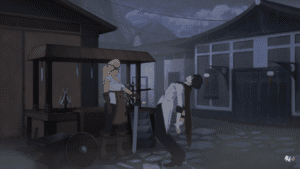
Story
I should start by pointing out that RWBY V5’s pacing didn’t collapse overnight. While there’s a noticeable shift between 5×04 “Lighting the Fire” and 5×05 “Necessary Sacrifice”, it’s not until episode nine when things tip over the edge.
The best way to break down where the pacing issues start is by splitting up the six episodes into three parts. 5×05 “Necessary Sacrifice” and 5×06 “Known By Its Song” form part one, as that’s when the story is moving at an acceptable speed. True, the plot isn’t moving quite as fast as the first four episodes, and a couple of the scenes could benefit from having a few minutes shaved off or even split up. But for the most part, the pacing of these episodes is justified due to the focus on character moments, although they’re not quite as successful as previous similarly-themed episodes-but more on that later.
Episodes seven and eight are when the story’s pacing enters ‘uncomfortable but still acceptable’ territory. I say that with a degree of uncertainty though, because 5×07 “Rest and Resolutions” and 5×08 “Alone Together” are actually pretty strong episodes, all things considered. The reunion dinner and the Weiss/Yang interaction scene provide entertainment and strong character moments, while Blake’s plot makes the series feel like it’s finally getting back on track.
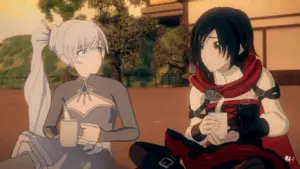
The problem, however, is that they’re right after episode five and six, which are also quiet and character driven. Alone, episodes seven and eight work very well as what I like to refer as ‘breather’ episodes: the story slows down for a bit to give the characters and the audience a moment to reflect on everything that’s happened so far. But because episodes five and six are also ‘breather’ episodes, it feels like the story has been put on hold for too long.
The Yang moments in episode eight are the best example. The conversation between her and Weiss regarding her complicated feelings towards Blake is a well-written and interesting scene, but because it takes place after three episodes of minimal plot progression, it feels like the ‘breather’ moment in the narrative has outstayed its welcome. So rather than appreciating the character development, the audience ends up going “this is interesting and all, but can we get back to the main plot?”
Ironically enough though, both episodes conclude in cliff-hangers that tease a return to the story momentum of the first four episodes. 5×07 ends with Cinder and company arriving at Raven’s camp, the camera cutting to black as Emerald draws her weapons. 5×08 ends with the White Fang invading the Belladona household, with the camera cutting to black as Ghira removes his cloak and roars at the Albain brothers.
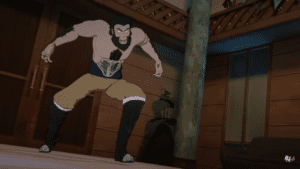
Now, I love both of these because they do an excellent job at creating anticipation for the following episodes. The reason I mentioned these exact moments 5×07 and 5×08 end is because they’re great examples of ‘show, don’t tell’. We see just enough to know what’s probably about to happen, but the editing means that it’s ultimately up to the audience to imagine what happens next. The same principal goes for pretty much every good horror film; what you don’t see is infinitely scarier, because it’s up to you to imagine it. 5×08 uses this formula particularly well as it plays off the death flags for Ghira and Kali planted in 5×05. Sure, it’s really exciting to end an episode with a badass preparing for a battle like Emerald in 5×07, but the possibility of that character not making it out of that fight alive creates even more anticipation for the next episode.
And this makes analyzing episode eight…complicated, to say the least. On the one hand, the episode feels like a true return to the main plot after lighter material, especially given that it doesn’t rely solely on the cliff-hanger to do so. The confrontation between Ilia and Blake seems like a culmination of everything that’s happened in Menagerie over the last volume and a half, acting as the moment when the plot enters its climax, and the ending with Ghira only adds to that.
But at the same time, the Yang moments leave the cliff-hanger of episode seven unresolved. In a way, it feels like the writers are pulling the rug out from under us, as if to say “surprise! Here’s the real cliff-hanger!” As a result, the overall pacing of the volume feels a little muddled, like there’s no one clear direction the story is supposed to be taking us…which brings us, rather appropriately, to episode nine. But before I dive into “A Perfect Storm”, I’d like to take a moment to refer to the opening theme song of Volume 2, “Time to Say Goodbye”.
There’s a point where it tips
There’s a point where it breaks
There’s a point where it bends
And a point we just can’t take
Anymore
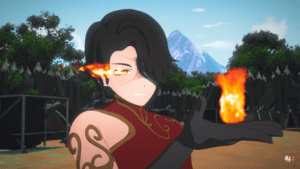
In case the above lyrics didn’t give it away, “A Perfect Storm” was when the pacing of V5 became straight up terrible. I can forgive episodes five to eight because while they certainly have their issues, they don’t make any outrageously bad decisions.
Episode nine though? No such luck.
Okay, toning down the nerd rage for a moment, my issue with this episode is how rather than focusing on the climax of the Blake narrative, the majority of the runtime is dedicated to Raven. Now had the interactions between Raven and Salem’s underlings occurred earlier in the volume, I would have enjoyed it! Watching the two factions of villains threaten, insult and scheme was legitimately enjoyable. Although there were definitely a few moments that could’ve been left out, the Raven scenes do a reasonably good job of setting up for the all-out battle at the end of the volume.
The problem is, these scenes come right on the heels of the nail-biting Blake scenes in episode eight, which were all about raising the tension of her narrative in preparation its climax. And when you go from “setup” to “rising tension”…
IT.
DOES.
NOT.
WORK.
By switching from Blake’s story to Raven’s, Blake’s narrative loses steam. The anticipation built up over the better part of the last two volumes takes a major hit, and the story doesn’t bounce back from it. While episode ten certainly served as a satisfying conclusion to Blake’s arc in Menagerie, there was the potential for it to be so much more.
For me, this is particularly upsetting, and not just because I spend so much time analyzing the show. It’s because to this day, RWBY remains one of only two stories that have made me so afraid a character might die that I had to stop watching. The first time I watched the finale of V4, “No Safe Haven”, there were so many death flags for Ren and Nora that I had to close my laptop and take a breather. While one or both of them dying seemed incredibly unlikely so soon after the death of their teammate Pyrrha, the groundwork laid over the course of V4 made the chance of a death feel very, very possible. So count me not only frustrated, but a little disappointed by the writing in episode nine. After the death flags dropped for the Belladonna’s in episode five, and the cliff-hanger ending in episode eight, the possibility of another nail-biting fight seemed just on the horizon.
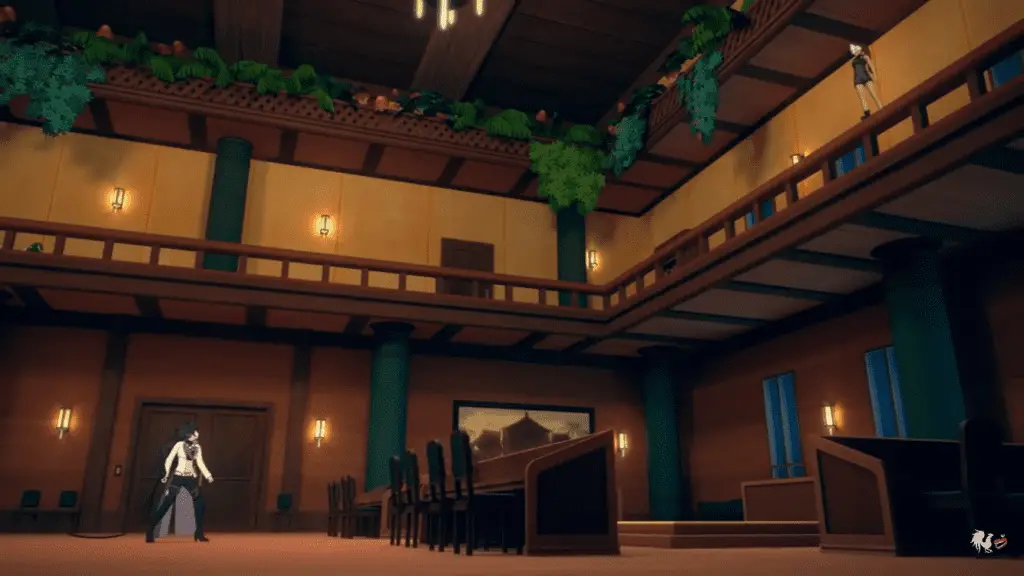
Unfortunately, the horribly uneven pacing of “A Perfect Storm” makes that impossible. A story just cannot maintain the same tension when it switches from the climax of one plot to the set-up portion of another. And while the pacing differences between the end of “Alone Together” and the beginning of “A Perfect Storm” are bad enough on their own, the way “A Perfect Storm” shifts from the Raven plotline to the Blake plotline just hammer the message home.
After the villain meeting, we briefly head back to Blake’s plot, as she and Sun arrive back at the Belladonna household to help fight off the invading White Fang. There’s a bit of well-choreographed action, some amusing back-and-forth between Sun and Ghira, and then…
They cut back to Raven.
…excuse me for one moment.
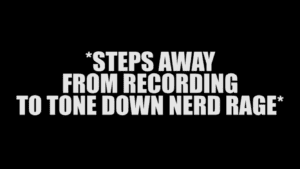
I just…I don’t know how to review this without rehashing what I just said. The only positive thing I have to say about this scene is that Raven plotting to backstab Cinder and co. makes me excited for the final fight, which takes the edge off the awfulness of the pacing. But then we switch to Oscar telling Qrow that Ozpin wants to talk to him, and all that excitement goes poof. I mean, the possibility of Raven sneaking off to warn Qrow was kind of interesting, but that’s really all there is to talk about. Like, the stare down between Blake and Ilia in the next scene was also pretty exciting, but at this point I’m so jaded by the episode I’m going to move on to “True Colours”. Especially given the scene they chose to follow that cliff-hanger…
However, there’s really only so many times I can criticize the pacing of a series, so instead I’m going to focus on how V5 could’ve been done better. To do that, I’m going to cast our minds back to the third volume’s ‘breather’ episodes, 3×07 “Beginning of the End” and 3×08 “Destiny”.
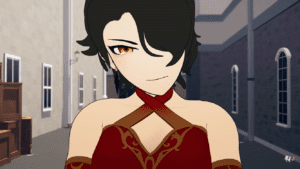
These episodes worked so well because they had a very singular focus. While episodes like “A Perfect Storm” and “True Colours” stumbled because they jumped from setup to payoff, 3×07 and 3×08 each picked a theme and ran with it for the whole episode. 3×07 is a flashback to the villains meeting one another, and 3×08 is the characters dealing with the aftermath of 3×06 “Fall”. The only times the episodes veer off theme is right at the end where they link back up to the main plotline. For “Destiny”, this is particularly important because it’s the end of the ‘breather’ period and the beginning of the volumes final arc. But because the episodes have stayed on course, this doesn’t feel like an awkward jump, but more of a natural progression, which V5 sorely lacked.
The writers’ three main goals of the middle of V5 seem to have been;
- Character development for team RWBY
- Setup for the final four episodes
- Resolve Blake’s arc in Menagerie.
Individually, these aren’t bad ideas, but the muddling of them together impedes the series’ ability to present an engaging narrative. Had the setup not been so poorly mixed in with Blake’s storyline, the writers may have been able to pull off a final fight that matched the Battle of Beacon. A more simplified approach to the narrative could have done so.
For example, had the Ilia/Albain brothers conversation as well as Qrow’s search for Huntsmen in Mistral been moved back, it would allow episodes five and six to focus solely on character development, which would have made for a nice ‘breather’ moment in the narrative after the action-packed first four episodes.
Then, if the reunion dinner had been immediately followed by Yang’s angst over Blake, it would mean that episodes eight and nine could focus on set-up, with the generated suspense making for a terrifying cliff-hanger at the end of episode nine as the White Fang invade the Belladonna household.
Finally, had episode ten focused solely on the Belladonna’s vs the White Fang, it would feel like a conclusive resolution to the middle part of the volume. The transition from character development to setup to payoff would have greatly alleviated many of the pacing issues.
Or, to put it visually:
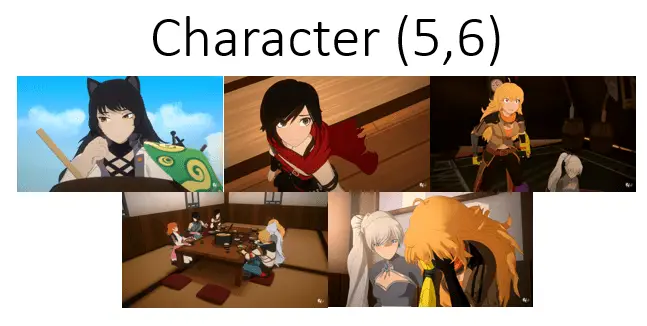
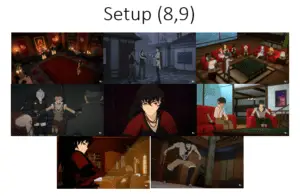

Of course, that’s just my way of looking at it. This restructure doesn’t account for every flaw in the narrative, like how some of those scenes really should have been trimmed down or cut altogether. But I’ll save that for Part 2.
NEXT TIME: Characters, Music, ILIA
Images courtesy of Rooster Teeth Productions and YouTube (Danzie Reviews)

